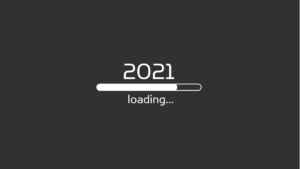What do ITAM Managers need to do in 2021?
Ahead of our Wisdom Online APAC conference we asked our sponsors
‘What do ITAM managers need to do in 2021?’
 Read on to hear what ServiceNow, Airtrack, and Snow have to say about what our focus should be for 2021. How should we adjust to the changes we made to enable our colleagues to work safely from home in 2020? What role can ITAM teams play in enabling Digital Transformation? And how do we do all this whilst ensuring we control costs and manage new risks?
Read on to hear what ServiceNow, Airtrack, and Snow have to say about what our focus should be for 2021. How should we adjust to the changes we made to enable our colleagues to work safely from home in 2020? What role can ITAM teams play in enabling Digital Transformation? And how do we do all this whilst ensuring we control costs and manage new risks?
ServiceNow
 Melissa Ries, Vice President, IT Transformation, Asia Pacific & Japan, ServiceNow
Melissa Ries, Vice President, IT Transformation, Asia Pacific & Japan, ServiceNow
While none of us can truly predict what the global business environment will be in five years, we can still prepare for future success by responding to what’s happening right now—and what we’re experiencing now is accelerated digital transformation. The world was asked to quickly transition into a work-from-home (or work-from-anywhere) environment meaning assets and employees are now more dispersed, the need for SaaS is increasing, and current systems, tools, and processes for managing assets across hybrid environments and physical locations are being challenged.
Inefficiencies in manual processes have been exposed. The old way of managing assets no longer works for today’s digital business. For IT asset managers, leading the organization further into digital transformation is going to play a vital role in a successful future. ServiceNow CFO Gina Mastantuono explains perfectly why digital transformation needs to be a high priority for every business:
“Why? Because digitizing manual processes can drive exponential increases in employee engagement, fierce customer loyalty, better scale, and of course, higher profitability.”
Digital transformation may look different for every business and the time it takes to implement new processes may vary, making it important to find the right tool to help along the way. A forward-thinking solution is going to be able to bring together your entire IT estate including software, hardware, and cloud resources into one platform. A digitally transformative solution will enable critical asset data to workflow to other areas of the business, simplifying and automating processes like asset on-boarding, IT service delivery, and procurement.
As the business environment continues to evolve, organizational leaders are going to keep looking to their IT teams (and the asset estate) to discover where costs can be reduced and where inefficiencies can be improved. By embracing new technology and digital, automated processes, ITAM managers can position their organizations to not only survive in any economy but also be a driving force in innovation and business growth.
TMG
 Mike Jones – Head of Business Operations and Development at TMG
Mike Jones – Head of Business Operations and Development at TMG
“There is no doubt, that 2020 has proven to be a challenging year for all, but as IT Asset Managers, 2020 has provided a number of opportunities demonstrate the value our discipline can bring to our organisations and has allowed us to utilise the skills required for ITAM to deliver enormous value in other areas of the business.
By our very nature, IT Asset Managers are detail focused, understand our businesses from top to bottom and…. We hoard data! I would argue that there is not another group within an IT organisation that has access to the breadth of data an IT Asset Management team has. From commercial information pertaining to hardware and software assets, detailed technical and organisational information about underpinning infrastructure and its relationship to the business service that they support…. We have it all!
As a result of the pandemic, many organisations are feeling the pinch. Budgets are being cut to account for economic downturn and the “new normal” presents challenges for IT departments to provide a safe working environment, from ANYWHERE.
In order to make the most of this opportunity, we need to ask ourselves “what can we do better, with what we already have”. We should take this opportunity to engage with other areas in IT (Config, Finance, Security) to understand the data that they have available within their systems and how we could utilise this data to drive additional value in IT Asset Management.
A key pillar of ITAM is asset verification, that is, referencing many different data sources to verify the existence of an asset and to obtain an understanding of its status within the business. By extending our Asset Verification process to include additional sources that we may not have considered, our analysis can help a number of other disciplines within IT to clean up their management systems and realise value that they had previously been missing out on:
- Desktops / Servers not in the CMDB (impact on IT Financial Management, Config, Asset Refresh, ITSM etc)
- Desktops / Servers not covered by Anti-Virus (impact on security posture and hygiene)
- Systems reporting different attributes for the same Config Item (impacts on ITAM, Asset Refresh, Config Management)
- CI’s that are being billed incorrectly, representing a quick win and direct cost savings.
In what has been a crazy year, we’ve seen our customers pivot to demonstrate value beyond traditional ITAM to senior stakeholders and have secured additional budget to drive further efficiencies, come and see us at Wisdom APAC 2020 and we’ll share our experiences and show you how to Level Up in 2021!
Snow
 Alastair Pooley, CIO, Snow Software
Alastair Pooley, CIO, Snow Software
For the past 5 months, the challenges of COVID-19 led many IT teams to focus on short-term issues to ensure continuity of service for a diverse workforce. The speed of the rollout often led to shortcuts, and now IT teams need to address the underlying issues. As working practises evolve, it is time to tackle the consequences of those short-term actions and re-work the strategic IT plan for the next 18 months in the ‘new normal.’
Revisiting your plan
According to IDC, Q2 2020 saw laptop sales increase by 11.2% as many firms transitioned to remote working. This rightly triggered concerns around visibility of licensing, security, productivity, maintenance, and supportability of that new computing estate. Ensuring you have visibility and control of those endpoints is therefore a priority that should take precedence in your plan.
Another consequence of the pandemic and the economic shock which came with it was the common introduction of new spending controls or policy changes designed to slow down cash transactions. Across the industry, many IT teams paused or postponed imminent projects or upgrades to ensure they had both the time to focus on remote work projects and the budget required to fund these additional costs. Now, there may be a need to revisit what was paused and identify which items are still key priorities for the business, giving due regard to new constraints on cost control, expense management, customer experience projects or any digital transformation initiatives.
Creating a new plan
Once you have revisited and re-evaluated your pre-pandemic list of priorities, you can then start looking at what new initiatives could be brought in to drive additional value. That might be projects to improve customer experience and assist the business in growing revenue; or it might be reviewing your telephony/communication approach to ensure your staff is available if remote work remains the norm for the next 12 months.
Datacentre investment should also be looked at carefully as the lockdown restrictions and potential loss of key individuals due to sickness may present challenges to maintaining your facility. Look again at what mix of public cloud, co-location and owned facilities is appropriate and will enable the greatest flexibility. Many businesses have risen to this challenge by making greater use of public cloud in addition to their datacentres, a move that will provide more resilience and reduce risk.
A responsive IT sector will recognise that the “new normal” may be dramatically different – especially with the on-going number of remote workers. We have to recognise that, for the most part, employees working at home seem to prefer it. IT should re-examine any assumptions around physical kit such as monitors, docking stations, office networking and capacity as we seem to be at the beginning of a revolution around where many of us work. Collaboration software and the hardware to make remote work more effective has become critical. Who would have thought a few months ago that there would be a pressing need for virtual whiteboards to help teams previously used to collaborating around a physical one in the office?
Steps moving forwards
In summary, you should be looking at the visibility and manageability of your endpoints. Your previous list of priorities should be re-planned with customer experience or digital transformation initiatives taking priority. New projects to improve collaboration should be considered, and your investment in endpoint security and awareness training should be reviewed. Any datacentre or office networking spend should be closely scrutinised to focus on making use of the public cloud. And finally, make sure your organization is planning for the new ways of working, as it appears this shift may not be so temporary after all.
Summary
Plenty to think about for 2021 for all of us there. Looking ahead I think we as ITAM teams really have a chance to shine. We saw a big spike in audit activity from publishers in the last big global recession but undoubtedly ITAM as a discipline is much more mature and better equipped to respond this time. Importantly, that gives us the ability to push on and become a strategic partner for IT, enabling digital transformation and keeping our colleagues working safely from home.
For more on the topics in this article and much more besides please sign up to attend Wisdom APAC Online – it’s completely free and you’ll get to hear from local and global ITAM professionals on topics including Audit Defence, Cloud, SaaS, Open Source and Engineering.
Can’t find what you’re looking for?
More from ITAM News & Analysis
-
ITAMantics - April 2024
Welcome to the April 2024 edition of ITAMantics, our monthly news podcast where we discuss the biggest ITAM stories from the last month. George is joined this month by AJ Witt and Ryan Stefani. Stories tackled ... -
Broadcom is removing expired VMware licences from its portal - take action now!
Hot on the heels of Broadcom’s announcement of the end of perpetual licences for VMware it has given customers barely a week to download any keys for licenses from its portal with expired support. This is ... -
Who Loses When Broadcom Wins?
News of a new Broadcom deal rarely arrives with great fanfare. The November 2023 VMware acquisition provoked open worry online and in business circles, with many critics wondering whether the former Hewlett-Packard spinoff’s reputation would prove ...